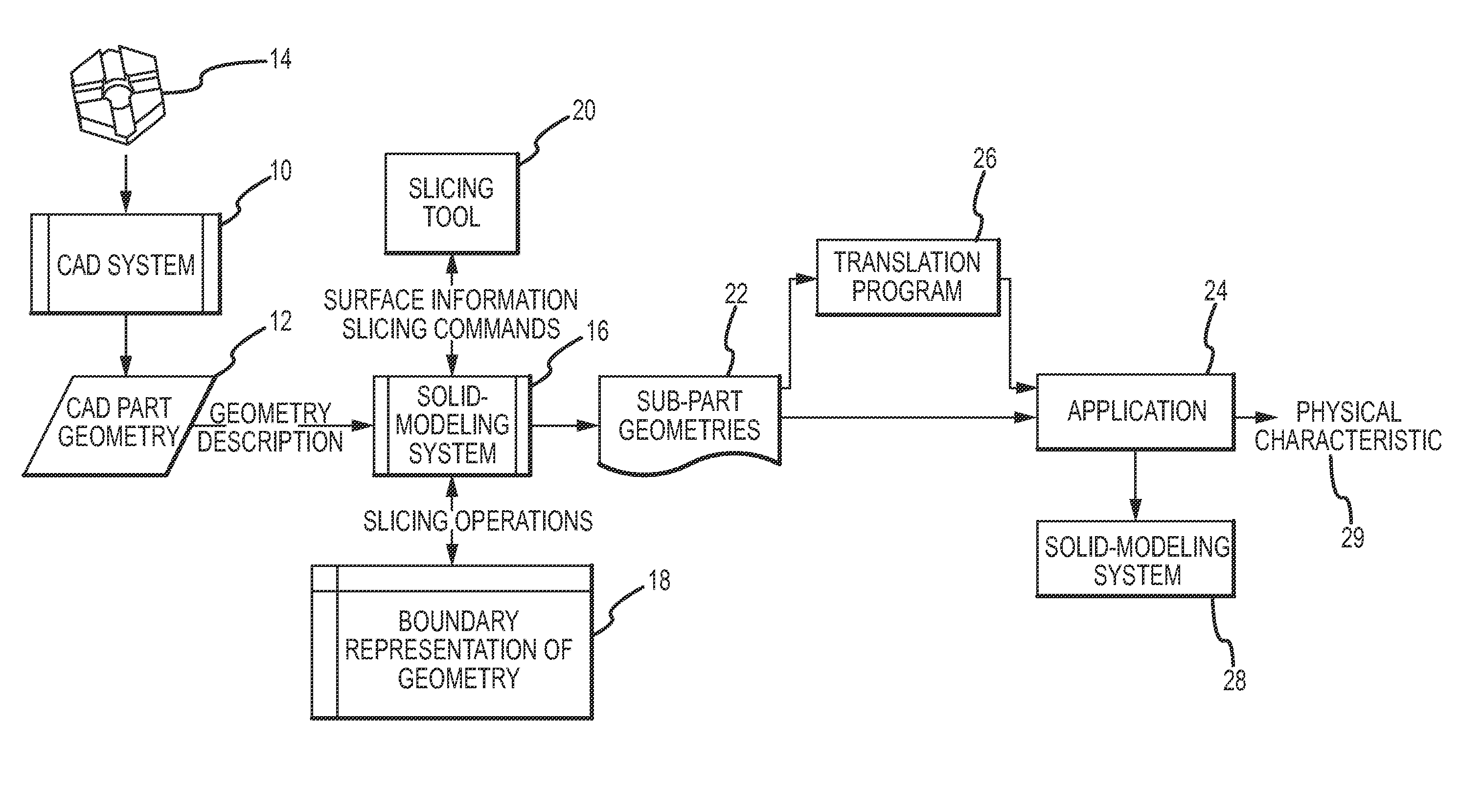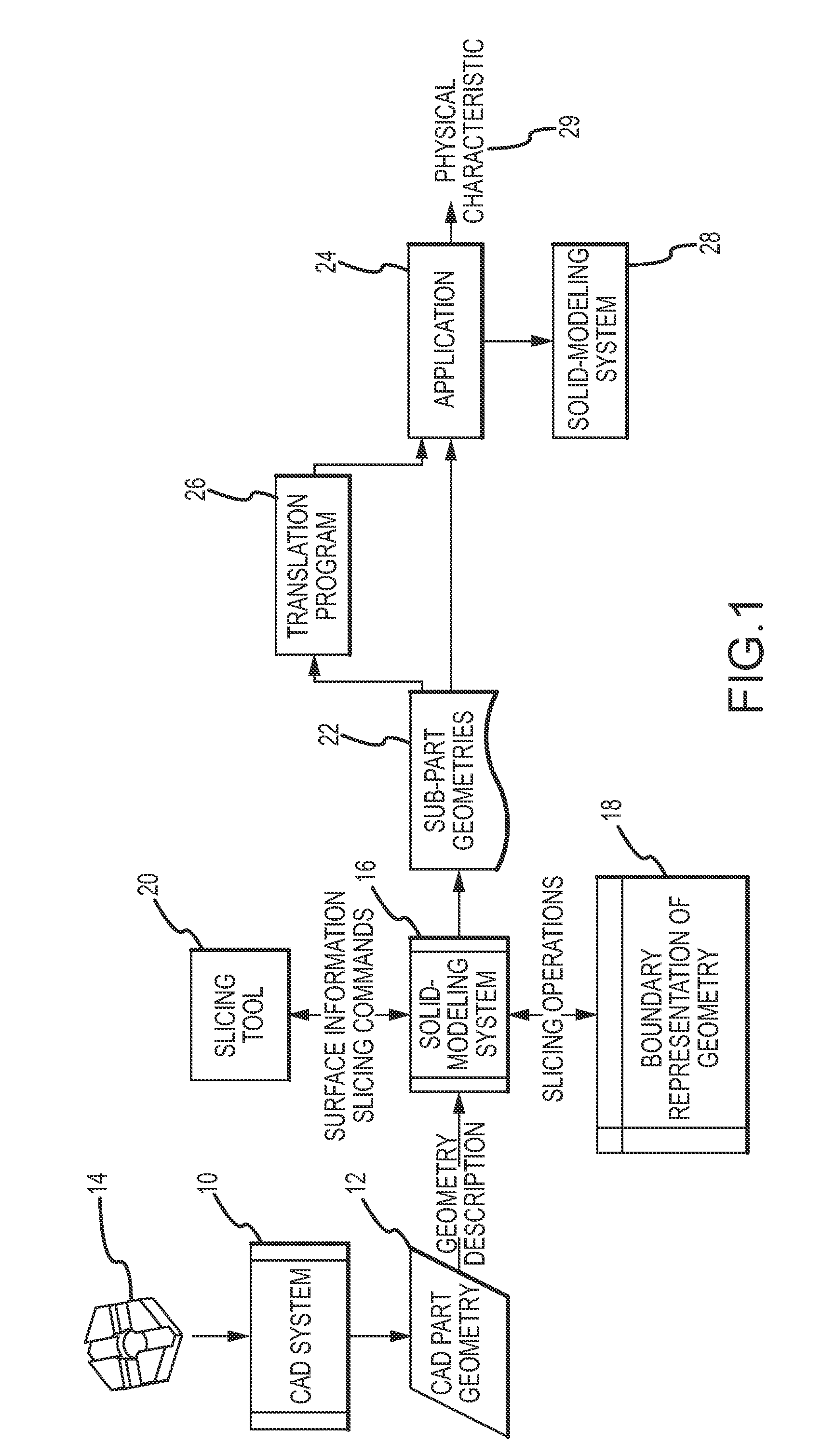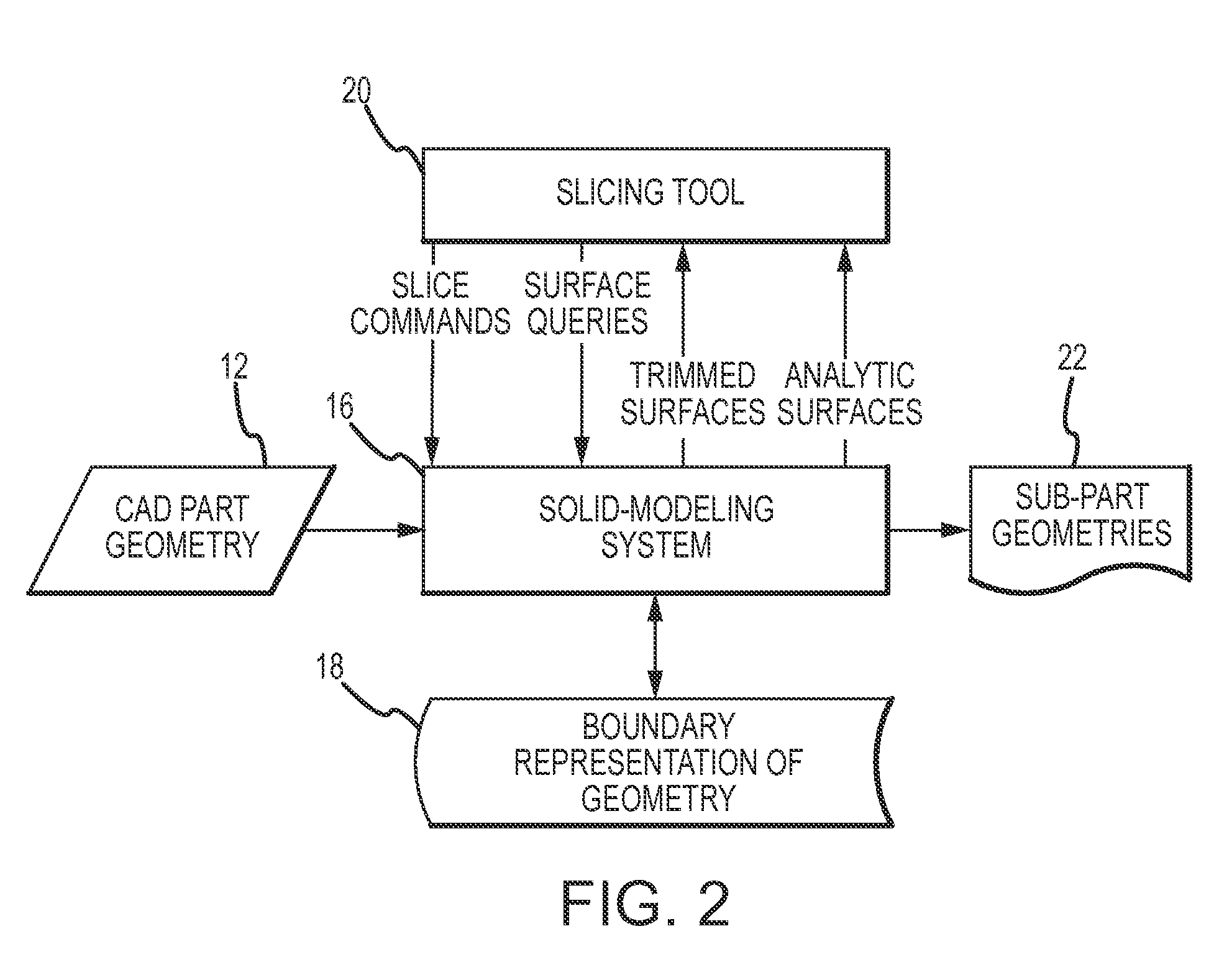System and method for partitioning CAD models of parts into simpler sub-parts for analysis of physical characteristics of the parts
a technology of cad models and sub-parts, applied in cad techniques, instruments, image generation, etc., can solve the problems of prohibitively expensive computer resources and time for simply computing the factorial metric for parts that include a large number of surfaces, and achieve the effect of reducing the complexity of any downstream solid
- Summary
- Abstract
- Description
- Claims
- Application Information
AI Technical Summary
Benefits of technology
Problems solved by technology
Method used
Image
Examples
Embodiment Construction
[0022]The present invention provides a slicing tool for use with a solid modeling system that partitions the geometric representation of a three-dimensional part into a series of simpler sub-parts the union of which replicates the original part in a manner that introduces a minimal number of new surfaces in each sub-part and in total. This approach is designed to greatly reduce the complexity of any downstream solid modeling applications that perform combinatorial surface operations on the geometric representation of the series of sub-parts to analyze physical characteristics such as radiation, mechanical, optical, thermal, structural or biological of the original part.
[0023]The slicing tool achieves optimality by being informed by geometric data already contained in the part geometry. In other words, the tool uses existing bounding surfaces to slice the part and selects the best slice (or one that is good enough to terminate the search). By using this approach, one can do the neces...
PUM
 Login to View More
Login to View More Abstract
Description
Claims
Application Information
 Login to View More
Login to View More - R&D
- Intellectual Property
- Life Sciences
- Materials
- Tech Scout
- Unparalleled Data Quality
- Higher Quality Content
- 60% Fewer Hallucinations
Browse by: Latest US Patents, China's latest patents, Technical Efficacy Thesaurus, Application Domain, Technology Topic, Popular Technical Reports.
© 2025 PatSnap. All rights reserved.Legal|Privacy policy|Modern Slavery Act Transparency Statement|Sitemap|About US| Contact US: help@patsnap.com



